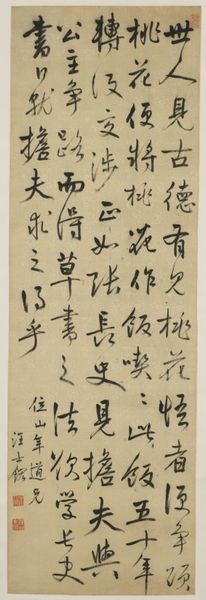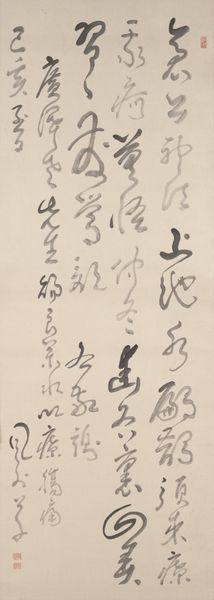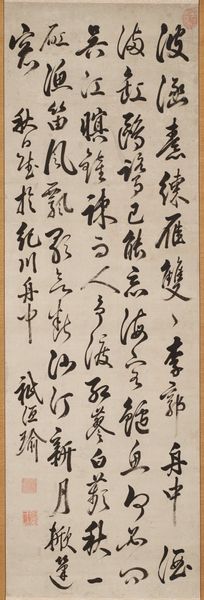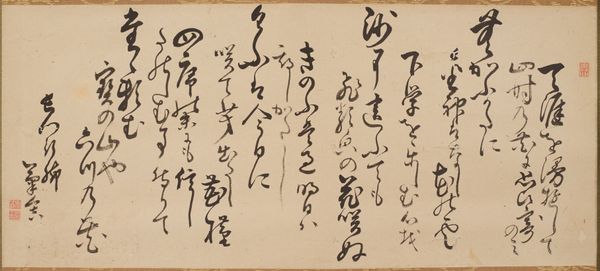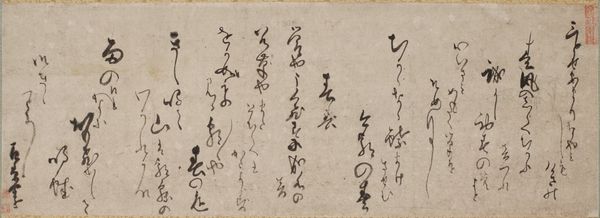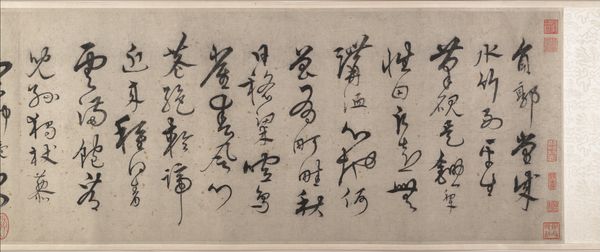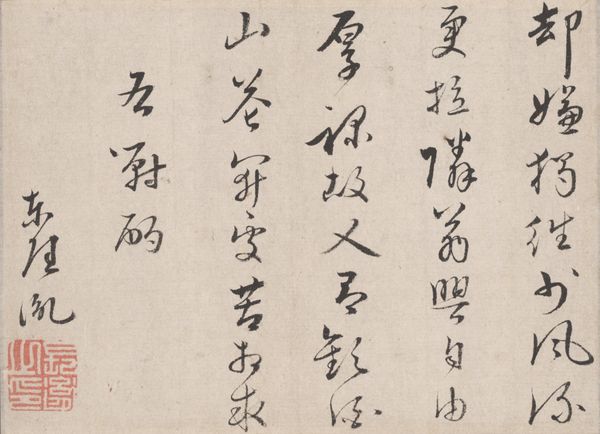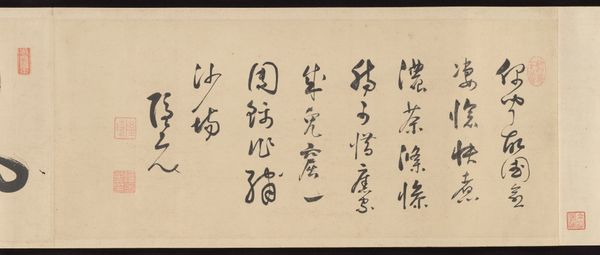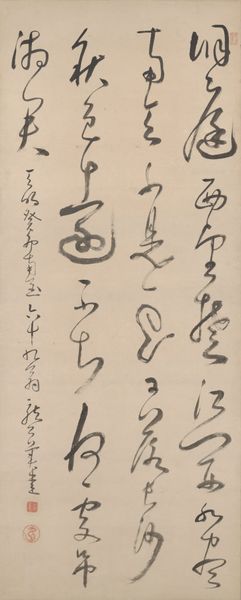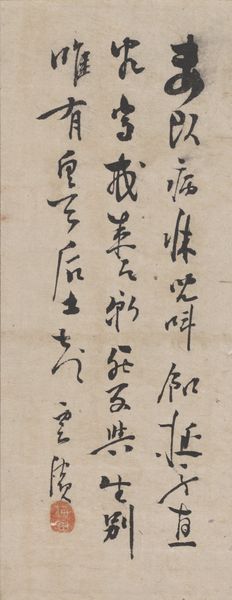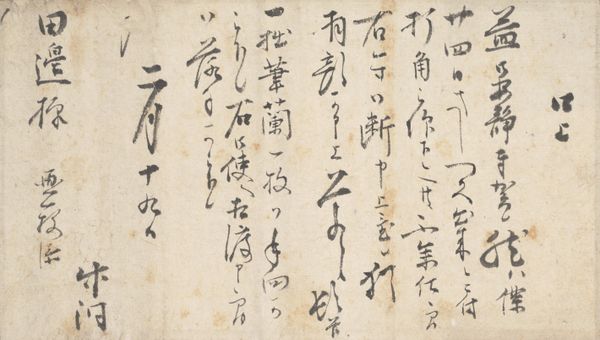
drawing, paper, ink, color-on-paper
#
drawing
#
hand-lettering
#
lettering
#
asian-art
#
hand drawn type
#
hand lettering
#
japan
#
paper
#
personal sketchbook
#
ink
#
color-on-paper
#
hand-drawn typeface
#
fading type
#
sketchbook drawing
#
sketchbook art
#
calligraphy
#
small lettering
Dimensions: 9 × 228 1/4 in. (22.86 × 579.76 cm) (image)9 1/8 × 242 7/8 in. (23.18 × 616.9 cm) (mount, without roller)
Copyright: Public Domain
Editor: This is "Landscape Scroll" from around the 19th century, attributed to Hosokawa Rinkoku. It’s ink and color on paper. It feels almost like a page ripped from a journal – very intimate. What do you see in this piece? Curator: The immediate impression is of transience. The delicate brushstrokes, the fading ink… they evoke the ephemeral nature of experience itself. It reminds us that even landscapes, seemingly permanent, are subject to constant change. Do you notice how the calligraphy both depicts and comments on this? Editor: It’s definitely not a landscape in the traditional, scenic sense. The text dominates. It feels like the landscape exists within the poem, or vice-versa. Curator: Precisely. The characters themselves carry symbolic weight, linking the personal with the universal. The choice of symbols and the calligraphic style both build layers of meaning. It becomes a visual record of a particular emotional state and its connection to a specific cultural memory around nature’s impermanence. Editor: Cultural memory? You mean like how certain images or artistic styles can remind us of broader themes in Japanese art? Curator: Exactly. Think of wabi-sabi, embracing imperfection and the fleeting nature of beauty. The intentional imperfections here – the blurring of lines, the asymmetrical composition – those connect the piece to that broader aesthetic sensibility. Can you see how this piece speaks to the psychology of longing? Editor: I think so. It's about seeing beauty and melancholy hand-in-hand, like nature mirroring how we ourselves change. Curator: Indeed. Visual symbols function much like dreams – each one layered with potential meanings accumulated over centuries. It leaves us contemplating how we make sense of both inner and outer landscapes, and also how art reminds us that those two landscapes mirror each other. Editor: It makes you think about how much intention and historical significance is bundled into one, small piece of artwork. It's beautiful!
Comments
No comments
Be the first to comment and join the conversation on the ultimate creative platform.

